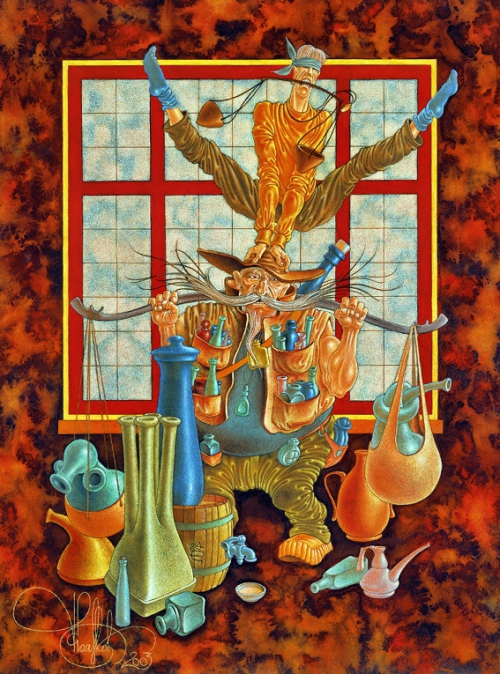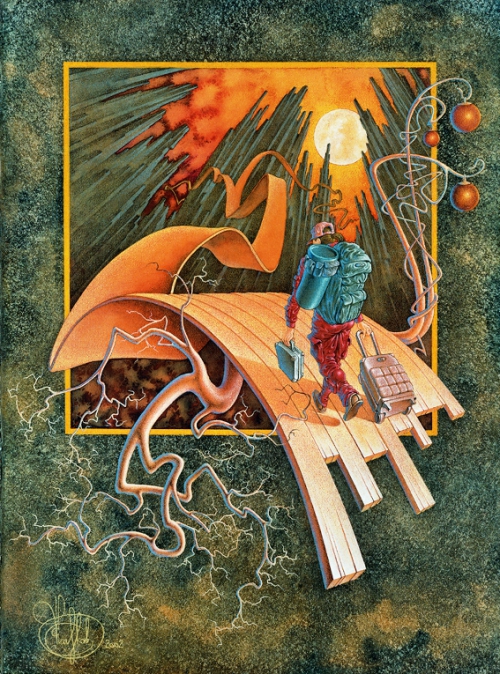Impeccable imperfection - the work of Sergei Poyarkov
 [thumb]https://nevsepic.com.ua/uploads/posts/2011-02/1298459470_01_poyarkov .jpg[/thumb]
[thumb]https://nevsepic.com.ua/uploads/posts/2011-02/1298459470_01_poyarkov .jpg[/thumb]
Here and further S. Poyarkov’s explanations:
The most important thing in art for me is that art has no boundaries, now art is not limited by anything: neither form, nor theme, nor content. From my point of view, the greatest achievement of 20th century art is that its boundaries expanded to the horizon. How wide it is for each person depends only on himself. After all, you can stand on Mount Everest and see the horizon hundreds of kilometers away, while passionately wanting more. Or you can sit in a hole and see a horizon of 3 meters, rejoicing in the fact that at least this is there, but it could be less. It is impossible to say whose position is better, more profitable, more reasonable. It just happened.
I do not claim that my position is better than another, no, it’s just that this is my position, my philosophy. I once heard a story about a rabbi whose name was Dzusi. He said: “When I die, God will not ask me why I was not Aristotle, he will ask why I was not Zushi.” I want to be myself and I believe that such aspiration is the most important thing for every artist.
There is a certain spark that does not go out in the artist, does not give him the opportunity to change his profession. A true artist cannot help but be an artist. Neither poverty nor wealth can distract him from creativity. A true artist is ready to do anything for the sake of art. For the sake of art, a person can not only live his whole life in a basement, in poverty - for the sake of art, he can earn millions, learn languages, move mountains, in order to practice his art and bring it to the highest point. That is, it is possible not to engage in art in order make money, but make money in order to make art.
Professionalism that comes with age, education, adult life are imposed on the artist like asphalt. And an artist can break through this asphalt, grow, he can overcome both academicism and the routine of life, if this spark remains in him, this awe, like a child, in front of a white sheet of paper. This white sheet is magical, it can mean anything: space, a cave. It can be cheerful, it can be sad. He attracts you like a drug.
I once heard Einstein say that everything he achieved was possible because he was “inhibited”: all people grew up, but he did not. I became an adult, but continued to ask myself the same childhood questions. Thanks to this, he achieved something. This is incredibly important for the artist and for any person who is engaged in creativity, so that this childish feeling remains in him. Because when people grow up, they lose the opportunity to knock out some kind of spark from this feeling. The greatest tragedy for an artist is to grow up and lose refuge from reality.
Since in the USSR literature was such a refuge from reality, I, as a child of my society, am very literary, and people who were fond of books in childhood live according to this. Bookishness remains until the end of my life, and therefore the desire to introduce some kind of literary element directly into the visual process is inherent in me.
In principle, this is a rewarding mission for an artist who is constantly analyzing his own philosophy and expressing himself through it. Self-expression can be anything - building balloons, executing sentences or making money. There are some things that people cannot think deeply about because they are busy with other things. Artists exist to think about these problems, or at least this is how they justify their existence. They give a person the opportunity, in moments of rest, or instead of rest (after all, rest is often just a change of activities), to see some kind of philosophical concept that they have labored through or, on the contrary, cheerfully constructed, which, despite all its inconsistency, is necessary for some, and unnecessary for others. , after all, is intended to diversify life and expand its boundaries. An artist and art are needed, first of all, for people who do not engage in art themselves. These people are the most sincere and grateful spectators. Ideally, an artist’s creativity is the segment through which the range of life of everyone who sees his work expands.
Interesting things always come out with art. As soon as some avant-garde music makes its way, it’s new, cool, a fresh breath of air.
ear. Then they take her and put her on the rails of recognition, and what was a fresh breath of air; inevitably becomes a well-trodden road, a business. It's okay because the next underground band will come. That's how life works
It's the same in fine arts. The once established system of salon art was broken through by the modernists. But the time will come when modernists, like traditional salon art, will be “pierced” by the current of a new concept. Which, in turn, will grow old over time, become decrepit, become skeletal, and limited. And then something new will “take off”, displacing old philosophies, asserting its right to coexist with them.
As a child, I absolutely loved books. And if you look at my work as a whole, you can see that I was originally an illustrator. But I was always interested in coming up with some of my own stories, it was always crowded in the illustration field. And I drew some of my own illustrations, which were wider than the book material. I felt underexpressed and it irritated me. And then, at one fine moment, when I, while doing illustration, won a bunch of different prizes and competitions, I realized that this was not really my thing. I felt cramped, this cramped space suffocated me, I wanted more. Until finally, from these creative torments, a form was born.
The art material could be anything from pigeons, rocks, clay, Coca Cola cans, politics or sex. Looking at all this can also be art. Art has always been, is and will be broader than what is exhibited in galleries, vaster than what can come into our heads. Art is where it is made.
Every artist has a technique that suits his inner mood. For me this is illustrative graphics. I find it much more convenient to work on paper, because the range of textures that can be done on paper fascinates me more than what can be done with oil on canvas. I combine the watercolor technique, which is characterized by lightness, transparency, and calmness of color, with bright soft pencils. These two things shade and emphasize each other. This technique is at the same time simple to understand, although very complex in the manufacturing process. An array covered with watercolor is one texture, and right next to it you get an array clearly worked out in pencil, which emphasizes some element.
I combine watercolor textures, pencil, ink, and gouache. I don’t want to limit myself to one technique or one technique. If you look at my works, you can often notice that in each of them some unusual or completely absurd action occurs. And at the same time, the characters remain completely calm. They calmly carry out monotonous daily work, live their lives, without even realizing the absurdity of what is happening.
For example, a little man riding a floating piano hits the keys. He is not surprised by the situation he is in. A janitor who sweeps away “balls” under strange creatures... All these people are busy with daily routine work, despite its formal exoticism. This is only an apparent dissonance; in fact, everything happens the same way in life. We live in a completely absurd world, but we accept it as normal, just as those things that we consider normal can be completely absurd,
a house in a hot air balloon flies into the sky, it would seem that the system is leaving the system, there must be some kind of tension here. But the property of a person is to remain a person. He can't escape everyday life. A woman is cleaning the house, shaking out some kind of blanket. A fisherman catches fish, and children fly airplanes.
In the Soviet Union, I always perceived the art of the area where I grew up as narrative art, starting with non-Russian icons and ending with the Wanderers and socialist realism. This was almost always the art of a concrete, narrative, almost literary form. And the art of protest, when samizdat and semi-samizdat were held in high esteem even by those who lived in relative harmony with the system, was completely built on association, on nuance - this is how it remained in perception.
Having this base and getting to the West, I simply tried to combine two things - illustrativeness and multi-genre losophy. In my understanding, the world has united, borders have disappeared. If earlier it was divided into two parts, now the boundaries disappear. And not only ideological and geographical ones - they disappear at the level of philosophy and attitude to art. Discussions on what can be a subject for art are a thing of the past. Today, for art, everything can be a theme, everything can be a material. I was lucky to live in incompatible systems, and it seemed to me that the world as a whole still remained harmonious, regardless of the systems and their
contradictory. The existing harmony of the universe transforms contradictions into harmony. And only the human essence remains the same in any system. And to the best of his ability, he tries to illustrate the monotonous text of everyday life around him with philosophy.
My creative concept is that I make very illustrative easel graphics. On the one hand, it is based on my personal deep-seated associations and impressions, almost from childhood. On the other hand, on the basis of professional education, work experience and an array of things read and heard.
Probably, you can only write a counter-art article about me. My creative method is anti-illustration, a painting that needs to be illustrated with its own story. In each work I put my view on the subject, a complex or simply organized philosophy, each thing in the work is not accidental, it is necessarily combined with other things or with other works.
In some works, the personal almost disappears. In others, this personal thing prevails and I don’t like explaining such works at all. This book is structured in such a way that those works where my personal relationship to certain events are not so clearly expressed are explained broadly, my philosophy is fully expressed there. In other works there is minimal explanation. Some don't have them at all. These are paintings whose personal background I would not like to make public. Try to treat them the way children treat coloring books. Like "coloring books" for your imagination.
In principle, like any artist, I am a provocateur, I provoke the viewer in my own way, unique to me. I am the rightist Poyarkov, and I provoke you in the Poyarkov way. You like my provocation - that means you are my viewer; you don’t like my provocation - that means you are a viewer of another artist. Artists, creative concepts cannot be better or worse, they are just different. I don't think art can be definitively divided into high, low, medium, semi-medium, semi-sweet, fortified, or refined. For every person it is “theirs” or “not theirs”, likes or dislikes, touches or doesn’t touch. And you can, probably, even sell emptiness at the price of depth. But, all the same, if what doesn’t touch is covered with pseudoscientific terminology, it can and will look better, smell better, shine brighter, but it won’t touch you the way only “yours”, art that is in tune with you, touches you.
I have always been very interested in the reaction of viewers of my paintings: who they are, why they like my works, what they see in them, how they explain it to themselves. There was a case when a person who bought the work “Good luck!” (this was in America, at an exhibition), I saw in it a completely different meaning than the one I put into it. He came not intending to buy anything, but this work captivated him so much that he said, “My God, this is an ode to emigration!” He told me his story and colored my images with his imagination in his own way. It was as if he had built a completely new city from the same bricks. Or, for example, the work "Birthday". Once in America, one of the options from this series was bought by a woman whose ancestors were mostly musicians. When she saw this work, she said: “Lord, this is MY life, this is MY home for 50 years.” She stood in front of the painting for an hour and a half and was shocked: how similar what was depicted was to some of her associations. Her words: “This is the work that I dreamed of buying all my life, it resonated with me so much.” It seemed to me that her associates in some things were more interesting than mine, her explanations were somehow deeper.
I am convinced that human dreams must come true, this is the normal course of events. It is natural for a person to be happy and fulfilled. What I dreamed of as a child came true after some period of time. If you put effort into this, everything will definitely work out. This is generally the happy fate of workaholics - their dreams almost always come true.
I have always believed that an artist’s overly serious attitude towards himself and towards life is, in general, stupid. We're all going to die sooner or later, and most of us are going to die more or less painfully, but we just don't quite naturally think about it. We know this, but we don't live with it. This is an amazing human ability - to know and not notice, or to know and notice. We choose our own desired balance. When a person takes upon himself the labor, courage and effort to establish his own balance of contradictions, he will be able to live in a harmonious world. Only in this way can a person be happy.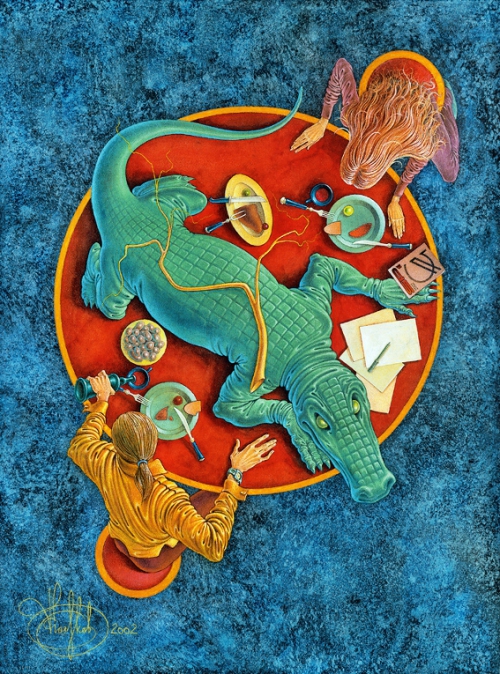
Every artist has some moment when he acquires professional skills and enters some kind of orbit, like a spaceship. Now gravity has ended and there is a huge space in front of him. This is a cool, intoxicating feeling that probably doesn’t even come close to being comparable to drugs, alcohol, or anything else. If the conductor needs a whole orchestra, then the artist needs only hands, materials and a rectangle, circle or triangle of clean (not necessarily clean) paper (or not paper). An artist today can make art out of anything, from anything he can create his own system of symbols.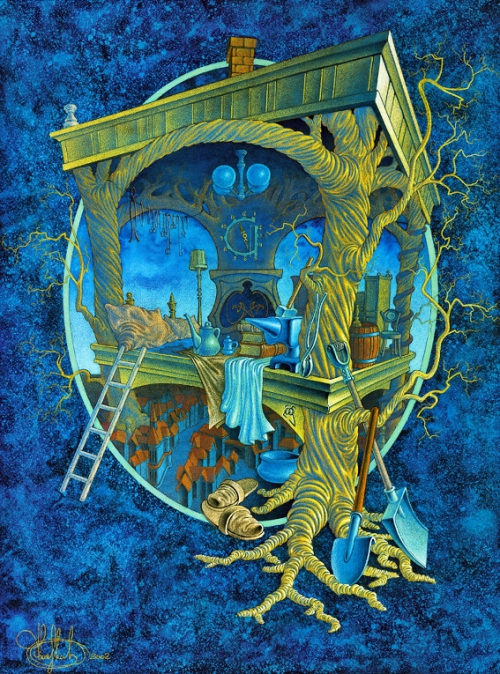
Those who are familiar with the history of art of the Middle Ages know that in those distant times, fine art was full of non-randomness. There was a certain system of symbols that was understandable to many. Behind the object, people saw something more than the object itself. For example, the pelican was a well-known symbol of self-sacrifice at that time. People believed that he fed his chicks with his own entrails.
Since childhood, I have been interested in the rules of Aesopian language; I have always been attracted by allegory and everything that hides between the lines. I have developed my own system of symbols. For example, for me the fish, a well-known symbol of life, also means a woman. Twisting tree branches represent confusing circumstances. Chess symbolizes both the medieval alchemist's formula and some kind of stockbroker's chart. We constantly live in a system, we are influenced by a huge number of factors, and we are obliged to tie them into balance. [thumb]https://nevsepic.com.ua/uploads/posts/2011-02/1298459503_36_poyarkov .jpg[/thumb]
[thumb]https://nevsepic.com.ua/uploads/posts/2011-02/1298459503_36_poyarkov .jpg[/thumb]
In principle, a chess game is the quintessence of our life. Pawns are daily, completely simple actions (for example, refueling a car). Shapes are more complex actions. There are more complex figures,| There are less complex ones, just as in life there are very difficult tasks, and there are less complex ones. Just like a rook that moves only straight, and a knight moves in an L shape, our life tasks are very comparable to this.
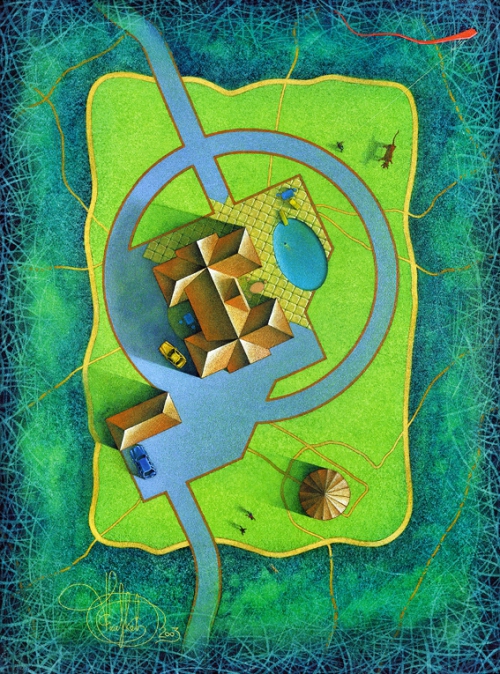 [thumb]https://nevsepic.com.ua/uploads/posts/2011-02/1298459491_35_poyarkov .jpg[/thumb]
[thumb]https://nevsepic.com.ua/uploads/posts/2011-02/1298459491_35_poyarkov .jpg[/thumb]
But besides our actions, there are inevitable factors - say, it rains, or the seasons change. That is, everything in life is divided into what we can change and what we cannot change. This is symbolized in the work where a candlelit dinner wins a chess game. No matter how complex calculations we make, there is still an element of randomness. The beauty of life is that something always happens suddenly.
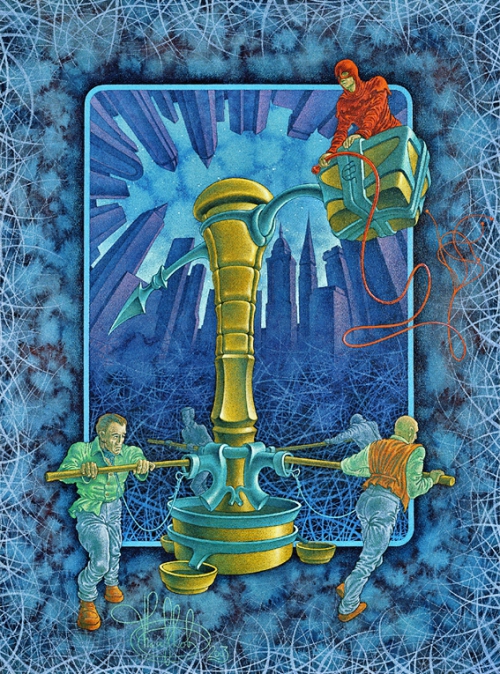 [thumb]https://nevsepic.com.ua/uploads/posts/2011-02/1298459497_34_poyarkov .jpg[/thumb]
[thumb]https://nevsepic.com.ua/uploads/posts/2011-02/1298459497_34_poyarkov .jpg[/thumb]
And this can suddenly completely destroy what the person had planned. The word that most fully explains life is suddenly.
 [thumb]https://nevsepic.com.ua/uploads/posts/2011-02/1298459418_33_poyarkov .jpg[/thumb]
[thumb]https://nevsepic.com.ua/uploads/posts/2011-02/1298459418_33_poyarkov .jpg[/thumb]
I often return to the themes of my old works. It’s just that as time passes, I see them in a completely new way. I’m interested in extending this topic, otherwise roll the symbol dice.
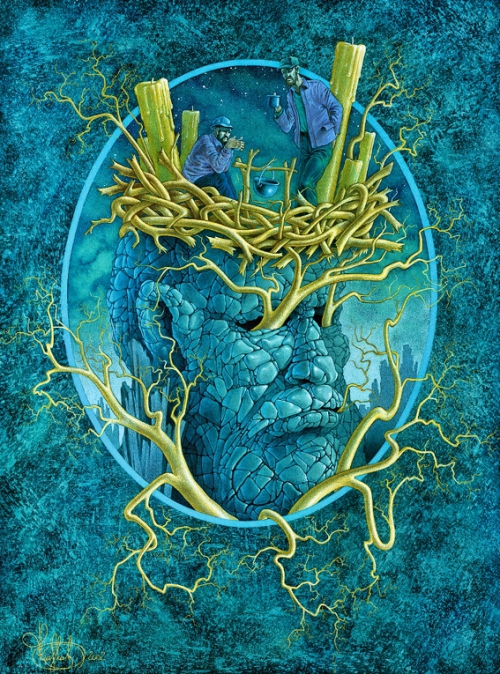 [thumb]https://nevsepic.com.ua/uploads/posts/2011-02/1298459484_32_poyarkov .jpg[/thumb]
[thumb]https://nevsepic.com.ua/uploads/posts/2011-02/1298459484_32_poyarkov .jpg[/thumb]
If a person wants to exercise, awaken some associations in himself (and a person, no matter what he does, is always drawn to creativity), he can come up with his own explanations of my works.
 [thumb]https://nevsepic.com.ua/uploads/posts/2011-02/1298459489_31_poyarkov .jpg[/thumb]
[thumb]https://nevsepic.com.ua/uploads/posts/2011-02/1298459489_31_poyarkov .jpg[/thumb]
The viewer can come up with his own complete story. I provide the foundation upon which man can build his own “edifice.”
 [thumb]https://nevsepic.com.ua/uploads/posts/2011-02/1298459411_30_poyarkov .jpg[/thumb]
[thumb]https://nevsepic.com.ua/uploads/posts/2011-02/1298459411_30_poyarkov .jpg[/thumb]
And then, if you want, you can look at my text, compare whether our points of view converge and whether the systems of symbols are similar or different, whether we perceive a certain balance of contradictions.
 [thumb]https://nevsepic.com.ua/uploads/posts/2011-02/1298459430_29_poyarkov .jpg[/thumb]
[thumb]https://nevsepic.com.ua/uploads/posts/2011-02/1298459430_29_poyarkov .jpg[/thumb]





